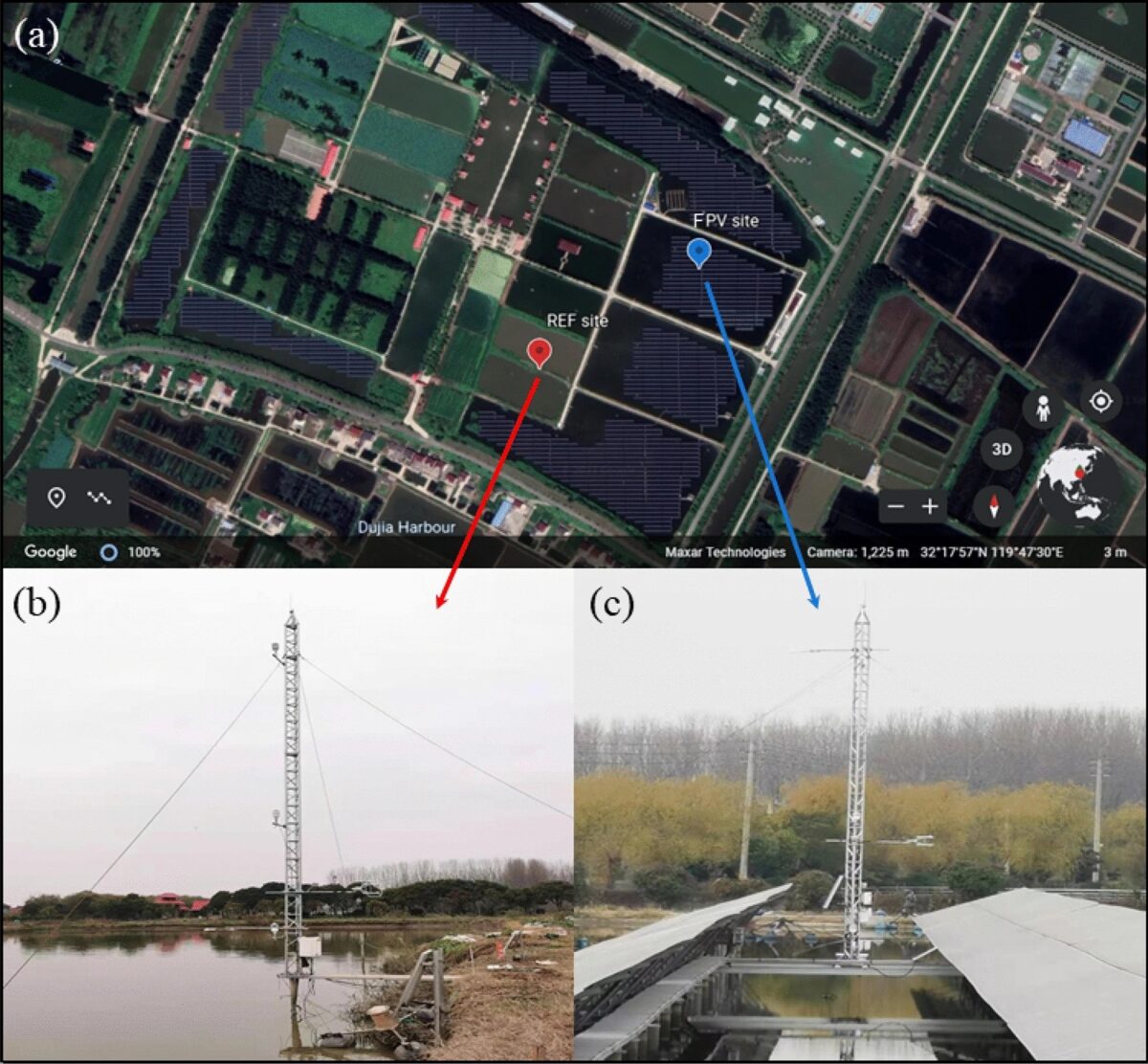Researchers from the Chinese Academy of Sciences and Chengdu University of Information Technology studied the impact of fishery complementary floating PV power plants on the radiation, energy flux, and driving forces on lakes under different synoptic conditions.
They said that the novelty of their approach consists in analyzing the characteristic of radiation and energy balance under different synoptic conditions for floating PV power plants, which previous research had reportedly neglected. “Our study fills this research gap maybe to amend the accuracy of solar radiation prediction due to our paper to consider the impact of weather condition on solar radiation,” they explained.
The trial was conducted at the Tongwei Huantai 10 MW Fishery Complementary Photovoltaic Demonstration Base in Yangzhong, a city in the Jiangsu Province of Eastern China. Two flux observation towers – one located inside (FPV) and one outside (REF) the floating PV power plant – collected data on three days with differing meteorological conditions, capturing and comparing the changes of radiation and energy flux for the two sites.
According to the researchers, the impact of the floating array on the sensible heat flux is 1.5 times compared to that of the natural lake, which they said means that solar radiation plays a decisive role in the change process of the sensible heat flux. They found, in fact, that the contribution of the impact of the solar radiation on the FPV site was 98%, while for the REF site, the contribution of the impact was 77%.
The data showed that the driving force of sensible heat flux on the floating PV system site was regulated by the temperature of the solar panels, while the driving force of the latent heat flux – under both sunny and cloudy conditions – was the wind speed multiplied by the water-air vapor pressure deficit.
“Overall, the latent heat flux (LE) in the two sites was relatively stable, and the sensible heat flux (H) in the FPV site has more obvious fluctuations than that of the REF site when there is solar radiation,” the report noted. “This phenomenon was explained by the air temperature in the FPV site rising faster due to the PV panel warming effect with obtaining the solar than the air temperature in the REF site.”
Popular content
Because PV arrays on a lake create a new underlying surface, the group established that the difference in radiation on these covered surfaces results from the effects of aerosol, water vapor, terrain, and weather conditions on sunlight.
The impacts of the floating system were also found to be related to the scale of the power plant.“The effects of utility-scale floating PV power plants on the radiation and energy flux need to be further researched,” the researchers concluded.
Their findings are available in the report “Effects of fishery complementary photovoltaic power plant on radiation, energy flux and driving forces under different synoptic conditions,” published in Scientific Reports.
This content is protected by copyright and may not be reused. If you want to cooperate with us and would like to reuse some of our content, please contact: editors@pv-magazine.com.



4 comments
By submitting this form you agree to pv magazine using your data for the purposes of publishing your comment.
Your personal data will only be disclosed or otherwise transmitted to third parties for the purposes of spam filtering or if this is necessary for technical maintenance of the website. Any other transfer to third parties will not take place unless this is justified on the basis of applicable data protection regulations or if pv magazine is legally obliged to do so.
You may revoke this consent at any time with effect for the future, in which case your personal data will be deleted immediately. Otherwise, your data will be deleted if pv magazine has processed your request or the purpose of data storage is fulfilled.
Further information on data privacy can be found in our Data Protection Policy.